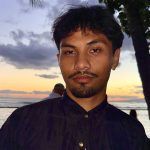You don’t look Samoan, they’re usually big and you’re, you know, small.” Thank you auntie of the day, I will be finishing my food in the other room.
Looking more Filipino than I do Samoan is a “compliment” I receive when speaking about my mixed race. This is something I hear regularly in my own Asian American Pacific Islander (AAPI) community.

Fortunately living in San Diego, Filipino and Asian culture were easily accessible. From the Asian District of Convoy to the rich history of National City neighborhoods, Asian culture never seemed to lack representation. However, when it came to Pacific Islander culture, the representation and celebration fell short to only a few notable events throughout the year such as the Pacific Islander Festival Association’s 30th celebration earlier in September.
Growing up I gravitated towards a much more prevalent Filipino culture. For my first job, I worked retail for an Asian American family-owned business. Working at the Filipino owned shop felt familiar and safe. Later, I found employment with another Filipino family-owned business in food. Again, I followed what was familiar to me.
Following the familiar was routine for me until I returned to school at Southwestern Community College. At this school, I would face a world of unfamiliarity. I took a few classes for two semesters and found it monotonous. I felt as if I was fading into the background of my own life, finding even myself to be unfamiliar, and ultimately wondering where I belong in life.
My Filipino identity often eclipsed my Samoan identity, echoing the discourse surrounding AAPI issues that tends to prioritize greater awareness for Asian Americans than Pacific Islanders. Many multiracial individuals, like the diverse youth of America, face conflicts of belonging and identity when met with two or more ethnicities and the nationality they reside in. The longing for identity became motivation in my higher education journey, motivation that led me to make the unfamiliar college environment familiar by joining Sangam Learning Community.
The first ever cohort of the AAPI Learning Community at Southwestern Community College, Sangam, is aimed toward AAPI students to inspire success in higher education. This is done with the intention to provide familiarity among students with AAPI course material. The courses the cohort takes together, Asian American Media & Film and Career Planning & Professional Development taught by Professor J.A. Ruanto-Ramirez and Counselor Samone Sayasenh respectively, give me confidence that Pacific Islander voices will be heard in the AAPI conversation. Sayasenh, a respected counselor in Equal Opportunities Programs and Services of Hmong descent, offers a course that provides students with essential resources, as well as life skills that set students up for success in any career. Professor Ruanto-Ramirez, a culturally knowledgeable research professor of Ilikano descent, teaches a course that analyzes and studies the AAPI representation in media and film and how that impacts AAPI people.
As with many AAPI spaces, I felt that the Pacific Islander piece lacked substance. I will not critique the leaders of this program, however I will call attention for more Pacific Islander representation. I am one of a few students in the cohort of Pacific descent. There are two out of fourteen weeks in the two day a week film class focusing on Pacific issues. There was a panel featuring solely Asian American professionals in their careers.
Growing up with both parents bringing cultural pride to the table, I know that there are many more Pacific Islander students, much more media of Pacific culture to analyze and study, and so many more Pacific Professionals in sustainable-passionate careers. This outreach program is in its infancy, yet with the proper information and resources, I believe Sangam can grow to fully represent both Asian American and Pacific Islander students.
The fixed AAPI representation as it currently stands, can cause anyone to wish for the sands in Samoa, the waters in Fiji, or the sunsets in Hawaii. Yet the cultural longing of the displaced Pacific people for their native homelands grows under the shadows of tourism and globalization. The culture is calling out for Pacific Islander representation and all of the Asian American Pacific Islander community must listen to fully support its entire community.
Ionatana Tai Lepule is a Business Administration student at Southwestern College, is part of the Sangam Learning Community, and is taking Asian American Media & Film with Prof. J.A. Ruanto-Ramirez. Lepule is a resident of Chula Vista.










